This was my most ambitious one so far.
Weeden Island Effigy Pot, ca. 1500 years ago
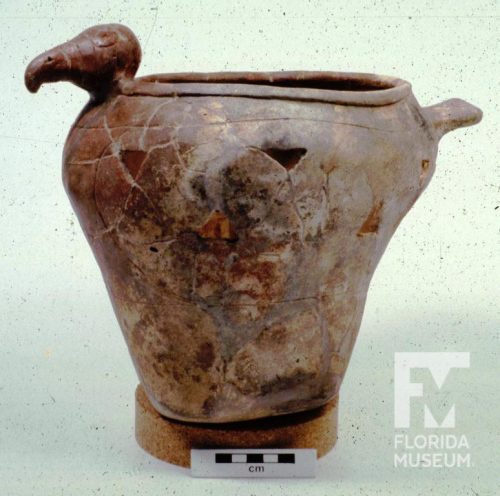
My inspiration for this vessel is a Weeden Island Red pot from the McKeithen site in Columbia County, FL, which is part of our collection at the Florida Museum. We call these types of pots effigies, because they have features of animals. In this case, the animal has been identified as a turkey vulture. You can clearly see the bald head, crooked bill, and tail on the opposite side. The vessel itself was somewhat irregularly shaped to make it more like an animal body. Ann Cordell reconstructed this pot and analyzed it as part of her MA thesis on Weeden Island pottery from McKeithen.
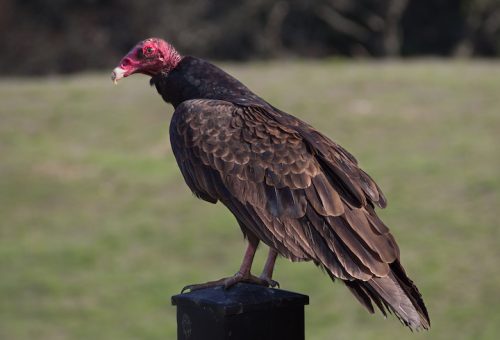
To make a replica of this pot, I started with some clay from Georgia. It was very smooth and contained small flecks of mica, a mineral common to the Appalachians, but not to most of Florida. When we find pottery with mica in Florida, we know that it probably came from south Georgia or northwest Florida. This clay looks tan, but our test fired examples have turned red. So rather than painting this pot with ocher, I wanted to see if I could recreate the red color with the clay itself.
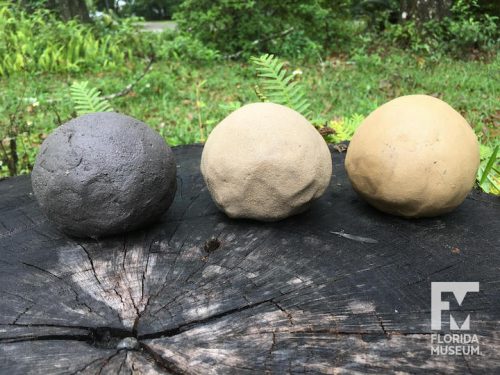
I made it with the typical coil method, paddling as I went to create the shape. Once the vessel had stiffened, I roughed out a head shape from a ball of clay and attached it to the pot. Because the head was heavy, I used moss to prop it up as it dried. After adding the tail and letting it dry further, I used a smooth stone to burnish the outside. Rubbing a smooth, rounded object against the firm clay will align the particles and make a hard shiny surface. This worked particularly well for this micaceous clay that didn’t have any big sand grains or other particles.
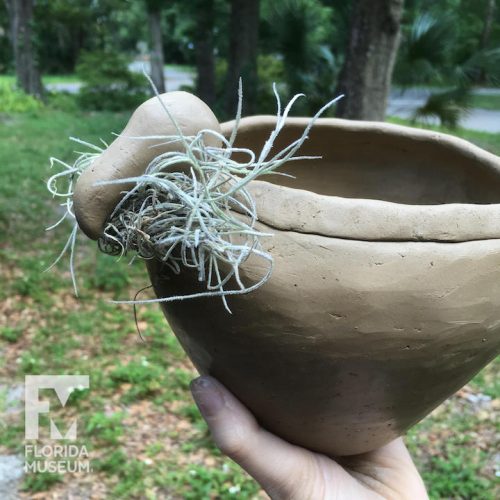
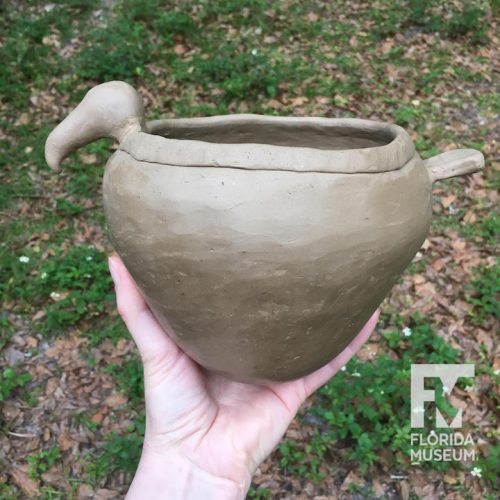
Using a shark’s tooth, I refined the vulture head and incised the horizontal bands around the body. I used the tooth and a pointed stick to carve out the triangles. The final touch was to “kill” the pot by making a hole in the base. We find pots with these holes on many sites in Florida. Sometimes the holes were made before firing, but usually they were made after, perhaps as a way to signal that a vessel was not longer meant to be used in daily life.
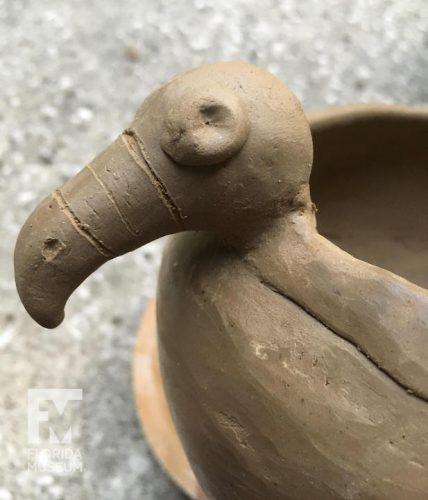
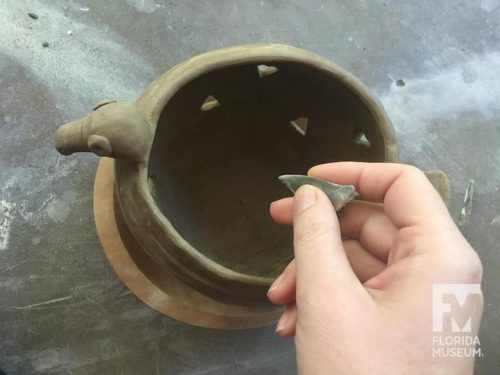
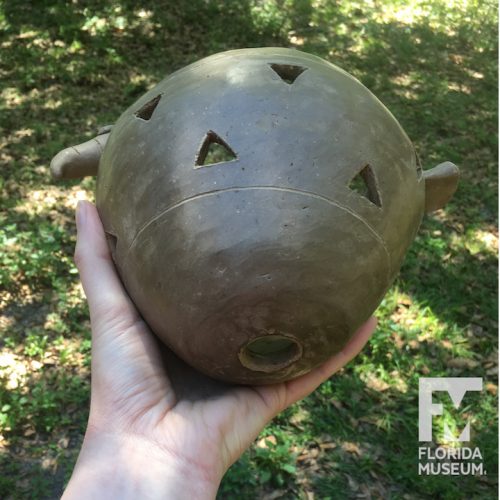
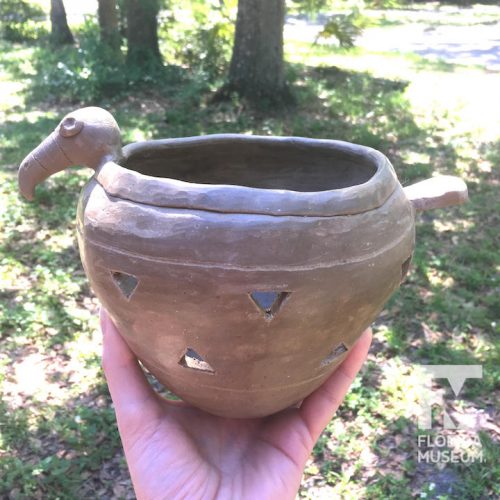
This pot was very fun to make because it had so many different elements. I look forward to seeing it out of the fire. You can look at more examples of our effigy pottery in 3D on Sketchfab. Here’s one of my absolute favorites: